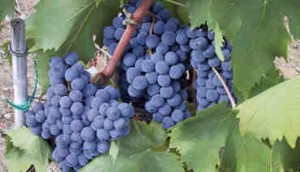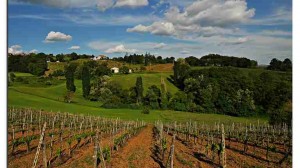Romagna’s Sangiovese
Romagna stretches between open plains and moved hills from the emilian province of Bologna, until the Adriatic between the Veneto and Marche. It is a land particularly suited to the production of fruit, so even the vine, which here thrives at least Roman times. The region was already known for its high productivity wine that seemed not to be at the expense of quality, since the wines
Hill was in high demand, even if you could not say the same for those products at plain. The fertility of the land of Romagna is linked to several factors, among which the most important are the composition of the soil and the goodness of the climate, the latter in part positively influenced by the presence of the sea.
The most famous local red wine is Sangiovese, so called from the modern age.
It is only during the last century, however, that the news about the wine and the grape become organic and punctual. Even at the end of the eighteenth century, however, was known with the common name of “red wine” of Romagna; was not, therefore, well identified. With the same name they were called, in fact, different wines between them.
Taking the current name involved the acquisition of a more precise identity, availed to the image and, therefore, the marketing not only in Italy, but also abroad. The vine leaf is characterized by an average of three or five lobes; the cluster is medium to large size, and is compact, cylindrical or pyramidal, with one or two wings. The berries are usually small to medium sized, roundish, with pruinose skin and large purplish black.
WINE
Sangiovese is recognized as DOC since 1967, and the specification as amended in 1992, states that it is vinified using only the grapes of the same name or who these are a part not less than 85%, in which case the blend must be completed with other red grape varieties grown locally. The grape yield per hectare must not exceed 110 tons and the production area includes several municipalities within the provinces of Forlì-Cesena, Bologna, Rimini and Ravenna. The typical characteristics of the wine are given a ruby red color with purple edges that sometimes tends to garnet or fades
The grape yield per hectare must not exceed 110 tons and the production area includes several municipalities within the provinces of Forlì-Cesena, Bologna, Rimini and Ravenna. The typical characteristics of the wine are given a ruby red color with purple edges that sometimes tends to garnet or fades
in shades of orange; the floral smell shows hints of violet, rose hips, to undergrowth and moss. The taste is dry, tannic, but over time softens and
becomes pleasantly almond, while the minimum alcohol content is 11.5 degrees. the Sangiovese is called “Superior” if produced in a smaller hill and only if with at least 12 percent alcohol and has to be put on the market from the first April of the year following the harvest.
The Sangiovese “Reserve” to be this must mature for at least two years from the first January following the harvest, and ensure alcohol level of at least 12 degrees. Within this general framework, should be added to the local conditions, which differ depending on the wine of the area in which it is
product.
THE VARIETY
The Sangiovese produced in Faenza garnet red and pulpy who live, getting older, weakens, assuming shades of purple and orange. The smell leaves reveal aromas of black cherry and violet, as well as memories of herbs and walnut; the taste is full, dry, distinctive and bottles can age up to the longest five years; it served at 18-degrees of temperature with roasted white meats in sauce and grilled red meats.
The Sangiovese vinified in the arrondissements of Forlì full and intense garnet red color, with purple hues that, over time, become rich shades of orange. It rich fragrance, intense, in which stand the violet and rose hips, as well as sketchy hints of underbrush; the taste, warm, is soft, full and firm. it can grow old quietly for 5 years or more; is served on the table at 18 degrees temperature and goes well with partridge casserole, seasoned cheeses
Apennines, also sheep.
The Sangiovese Cesena is recognizable by the intense garnet red color; has perfume rich, floral, this hotel combines flavors of wood; The flavor is full and the component tannic, with the passing of the years, it resizes to make room for a fund almonds. The wine can age over 5 years, is served at 18 degrees temperature and accompanies red meats cooked long.
The Sangiovese from Imolese have a clear ruby color with shades of cherries; the smell reveals hints of rose hips and wild flowers and the taste is tangy and fruity.
With certain exceptions, drink young and served at 16-18 degrees of temperature to accompany pasta dishes with fresh egg pasta with meat sauce or stuffed (lasagna, ravioli), roasted rabbit and lemon chicken.
The Sangiovese produced in Rimini, finally, is ruby red in color with shades of grenade; the scent is fragrant violet and herbaceous; the dry, fresh and light. It should be uncorked a young age, 16-degrees of temperature, for typical Italian appetizers, ie delicatessen, but which may also include terrine of birds or even tasty fish in soup, baked mackerel, sardines stuffed and finally grilled tuna.
It should finally be noted that the DOC includes the production of Sangiovese di Romagna Novello. It is prescribed that is to be obtained with at least 50 percent of wine coming from carbonic maceration of the grapes (instead of only 30 percent, as required by the legislation of the novel). It has a ruby red color; smell fruity taste dry or slightly rounded, fruity, balanced. must be served on the table in 14 degrees of temperature to accompany, in particular, salami, mixed vegetable soups, pasta filled with lean, white meat roast, roasted mixed cold, raw red meats, and finally, always tasty fish.
WHAT YOU SHOULD KNOW
Name: Sangiovese di Romagna DOC
Grapes: Sangiovese, at least 85 percent; other red grapes locally produced, maximum 15 per cent.
Tasting notes: Ruby red color with purple edges that sometimes tends to garnet or fades into orange hue; floral aroma, with hints of violet, rose hips, to undergrowth and moss.
The taste is dry, tannic, but over time softens and becomes pleasantly almond.
Serve with: bottles younger starters charcuterie, terrine of poultry or small game, fresh egg pasta with meat sauce, ravioli, lasagna; roast white meat and red meat raw.
The Sangiovese Riserva accompanying stewed meat red feathered game casserole, polenta and braised and, more generally, all dishes characterized by good structure.
from: La Cucina Italiana





Leave a comment